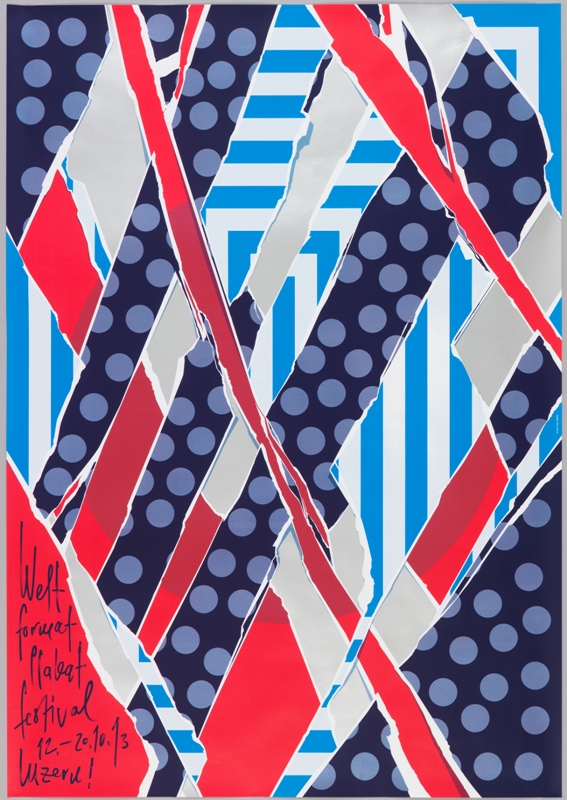When Swiss graphic designer Felix Pfäffli was asked to design a poster for the 2013 Weltformat Poster Festival held in Lucerne, he grappled with the “strange duplication” of creating a poster to promote a poster exhibition. He turned to the many posters hung on steel poster walls in the streets for his inspiration. As posters become out of date or events pass, new posters are put up in their place, layered over the old ones. Exposed to the elements, the posters becomes weathered and torn, revealing the layers of posters beneath them, as well as the steel wall.
For Weltformat 13, Pfäffli selected a group of his past poster designs, layered them on top of one another as if pasted onto a wall, and then digitally manipulated the images to reveal the layers through “tears” and “holes in the image. Pfäffli also used a metallic silver ink to suggest the steel surface beneath the posters. The result is an eye-catching trompe l’oeil effect, for while he graphically simulates destruction, the actual surface of his poster is pristine. Rather than distress the poster by hand, Pfäffli closely observed the weathered effects on the posters he encountered, and then reproduced the effects digitally, liberating him from “surprises and accidents.” The final touch was the typography, which is suggestive of a handwritten note scribbled on the poster, but is digitally generated. Pfäffli perceives “a fight between [his] posters and all the other ones.” “Everybody tries to make a clean, beautiful poster,” he has written, “so I designed one that is already destroyed.”
Caitlin Condell is the Curatorial Assistant in the Department of Drawings, Prints & Graphic Design at Cooper Hewitt, Smithsonian Design Museum.
